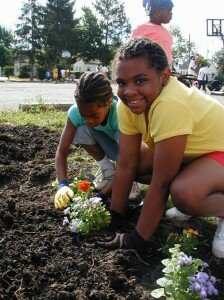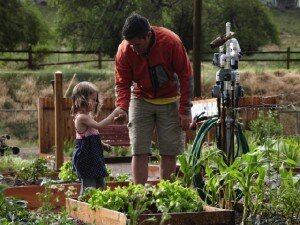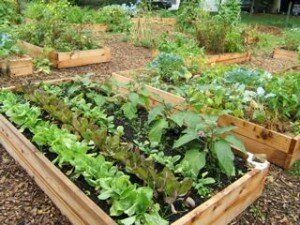 Happy May Day! It is a day to celebrate the beautiful flowers blooming in our communities and the last weeks of spring before the heat of summer rolls around. Take this opportunity to beautify your community by planting a flower garden in your neighborhood, home, or community center!
Happy May Day! It is a day to celebrate the beautiful flowers blooming in our communities and the last weeks of spring before the heat of summer rolls around. Take this opportunity to beautify your community by planting a flower garden in your neighborhood, home, or community center!
Flowers can beautify any dreary space. Have a park that could use some beauty? Clean it up and plant some flowers! Need to restore an old school? Add a school garden! Want to teach your kids about the environment? Teach them about the ecosystem through a garden. A garden can be the source of so many things from knowledge to food it is a wonderful way to get out and beautify your community, while celebrating an international holiday, as well!
Are you clueless when it comes to planting a flower garden? Check out our step-by-step guide that will get your project started with ease!
- Identify partners and leaders: Call on friends, family, schoolteachers, etc. to be volunteer leaders or to donate materials for the project. You will need rocks, hand towels, and flowers such as yellow, white, or light pink flowers. These flowers will bring butterflies to your garden.
- Set a location: Contact your local community organizations or centers about space they could donate to the project. Arrange a site visit with your team leaders to review the project plan before the volunteers arrive. Make sure you choose a location that receives a high amount of sunlight and a low amount of wind for plants at this time of year!
-
Establish goals: Goals will help you plan the actual project and the outcome you wish to achieve. Make a goal and plan
 the project around that.
the project around that.
-
Develop your plan: Ask yourself the following questions when developing your garden project:
- Where can I get funding for the plants and the supplies?
- What resources are available for use?
- Where can I find enthusiastic green thumb volunteers?
- How do I get the message out about the project?
- Do I want to attach a learning aspect to the project?
- Do I need help from volunteer leaders? What kind of leaders do I need?
- How will we maintain the garden after the project is finished?
- Define a timeline: Set a timeline for the project: how long it will take to plant the flowers, obtain the supplies, and maintain the garden.
- Promote: Recruit volunteers through fliers, newspaper articles, or social media. You can do this yourself or recruit the help of volunteers depending on the size of your project.
- Empower youth leaders: Allow young people to suggest ideas and contribute to the overall project planning. Their voice and ideas are vital to ensuring a successful project.
- Reflect and recognize: After the project, reflect on the work that was accomplished. Thank your volunteers for their contribution to the project.
 Your garden will be a great way to celebrate the month of May while improving your community’s overall well being. Gardens contribute to a better ecosystem, overall.
Your garden will be a great way to celebrate the month of May while improving your community’s overall well being. Gardens contribute to a better ecosystem, overall.
Have fun getting your hands dirty with your neighbors and happy May Day!
Have you started a flower garden in your community? We would love to hear your comments and suggestions in the comment section below!

 Today at
Today at  to play a role in the garden activities. These members will be vital in funding the garden, keeping up with its maintenance, and planning events.
to play a role in the garden activities. These members will be vital in funding the garden, keeping up with its maintenance, and planning events.
 exchange phone numbers or email addresses, it is important that all members can get in touch with each other in case anything comes up. It will also help maintain that sense of community between all those involved!
exchange phone numbers or email addresses, it is important that all members can get in touch with each other in case anything comes up. It will also help maintain that sense of community between all those involved!

